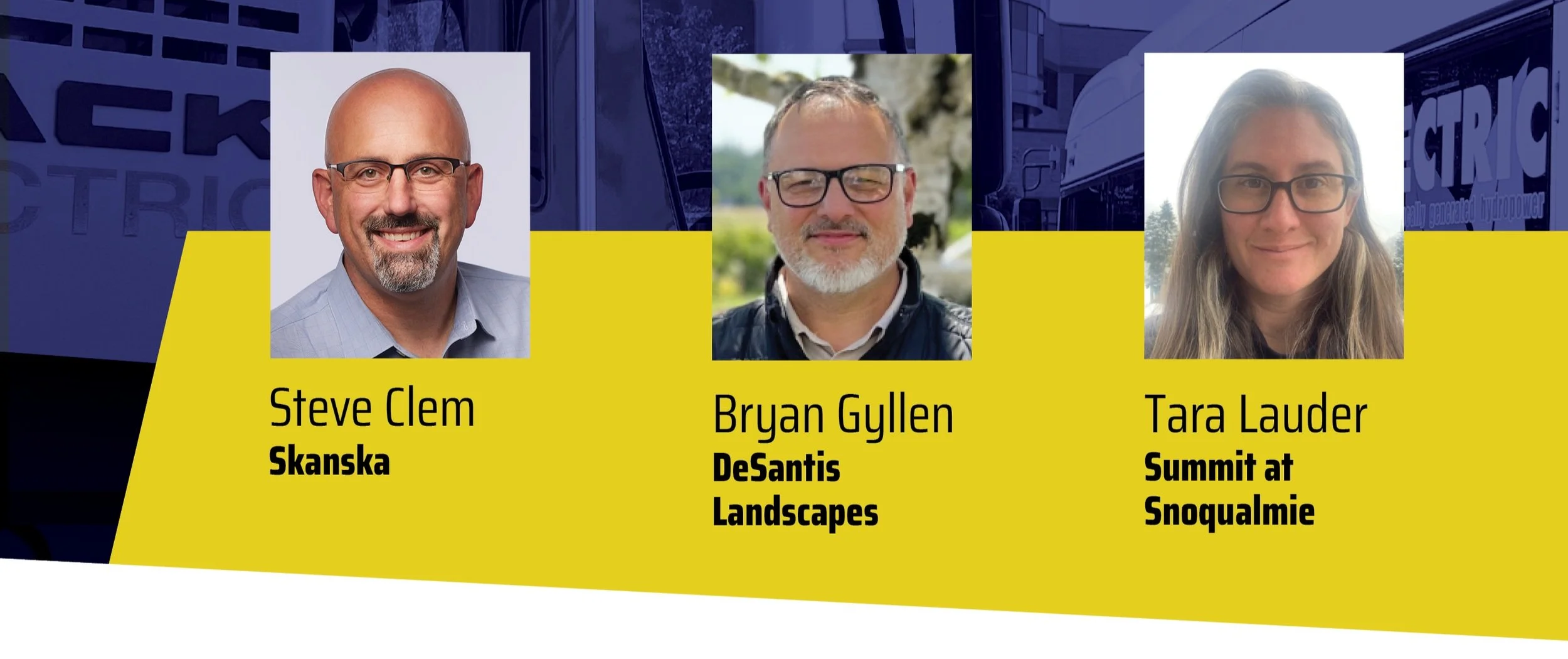Lessons learned from businesses on the road to electrifying their fleets
One of the biggest barriers to getting started on electrifying a business’ fleet is the isolation and uncertainty from navigating the complex process alone. Consistently, we hear from the people who participate in our Fleet Decarbonization Accelerator cohort program how much they value the opportunity to connect with and learn from other folks whose organizations are working toward zero-emissions fleets.
Wherever you are in your journey to decarbonize, you can learn from organizations of all sizes who have found a way through the same hurdles that you may be encountering now. We spoke to three Accelerator graduates undertaking fleet electrification, who candidly shared their learnings at a recent Breaking Barriers Collaborative webinar.
Fleet Decarbonization Accelerator graduates who shared about their experiences electrifying their fleets
1. Investing the time in planning now makes all the difference, regardless of when you’ll make the transition.
Transitioning fleets to zero-emissions vehicles doesn’t happen all at once. Starting planning now puts you in a position to make incremental progress on a timeline that’s realistic for your organization, even if a full transition won’t take place for several years.
Utility upgrades alone can take up to 18 months, so getting started now also positions you to take long external timelines and delays in stride. And add even more time if you need power to an out-the-way location. Just ask Tara from the Summit at Snoqualmie ski area, which is located on Snoqualmie Pass, about the importance of engaging with your utility as early as possible.
Before joining the Fleet Decarbonization Accelerator, Bryan and his team at DeSantis Landscapes had been thinking about fleet decarbonization for a long time, but struggled to get their arms around it. Putting in the time for planning with support from the Accelerator helped them break the process down into manageable pieces and better understand where they’d see real return on investment with electrification. Now, they’re able to incorporate EVs into future budgeting seasons and confidently position themselves to make significant progress in the next five years.
2. Big change can start small.
Change requires more than just getting new vehicles. It requires preparing people for the change. That can start with introducing new electric models of tools and equipment to allow teams to get comfortable with (and even excited about) a new way of doing things, rather than pushing straight away to full fleet electrification.
For DeSantis Landscapes, that has looked like electric leaf blowers and line trimmers; Summit at Snoqualmie started with electric snow blowers and then chainsaws; and Skanska has rolled out an initial small fleet of four EVs, spread across different regional offices.
3. Work in partnership with team members most directly impacted by a transition to zero-emissions vehicles.
To build internal buy-in, teams need electrification ambassadors who can build trust with the people who directly deal with the organization’s fleets every day.
Tara approached her team’s vehicle and equipment operators early on by showing up to the vehicle shops and putting in the time—learning how team members spent their days, observing their pain points, and asking them what would help alleviate them. Through Tara’s focus on trust-building and partnership, she has been able to shift the team’s culture to one of asking questions rather than skepticism.
4. Find the wisdom in resistance.
Steve has learned that when he experiences resistance from colleagues at Skanska, there’s wisdom in that resistance that can shift the business’ approach for the better. For example: colleagues with anxieties about EV range illuminate a need to proactively plan for extreme weather conditions, and to make sure there’s a solid charging program in place before handing over the keys to EV pickup trucks.
5. Your clients and customers want to see you go electric.
Public perception is a huge benefit to decarbonizing vehicles, and it’s one that businesses can see come to fruition early on.
DeSantis Landscapes’ clients have loved seeing regional managers show up in their EVs. When the business recently posted to social media sharing their new electric Chevrolet Silverado, they realized people had been taking note—multiple people responded saying they’d seen the truck on the highway recently.
Similarly, when Skanska posted to social media about their EV trucks, the response was overwhelmingly positive, with hundreds of complementary notes and emails.
Want to learn how to electrify your organization’s fleet alongside a cohort of like-minded businesses, nonprofits, and government agencies?
The Fleet Decarbonization Accelerator offers specialized PNW-specific guidance from speakers, 10 hours of one-on-one support from experts at the Electrification Coalition, and networking with peers through meet-ups and small group working and feedback sessions. We’re now accepting enrollments for our upcoming Accelerator.

